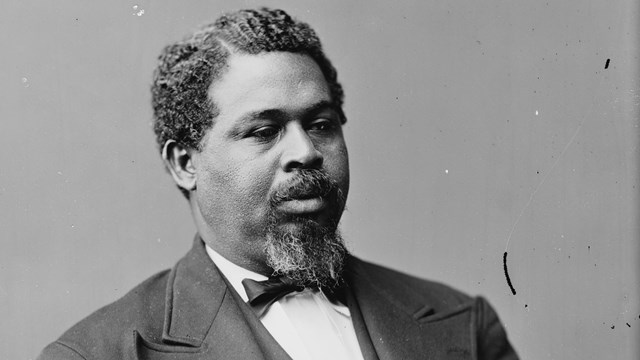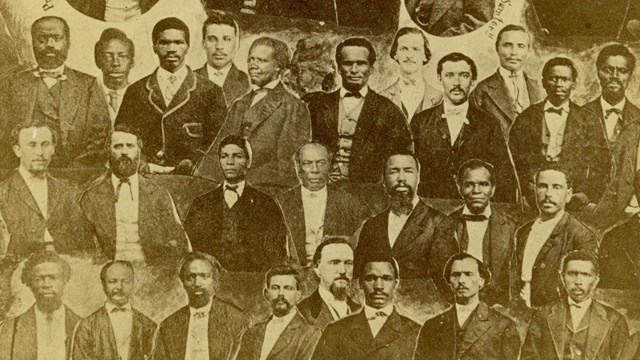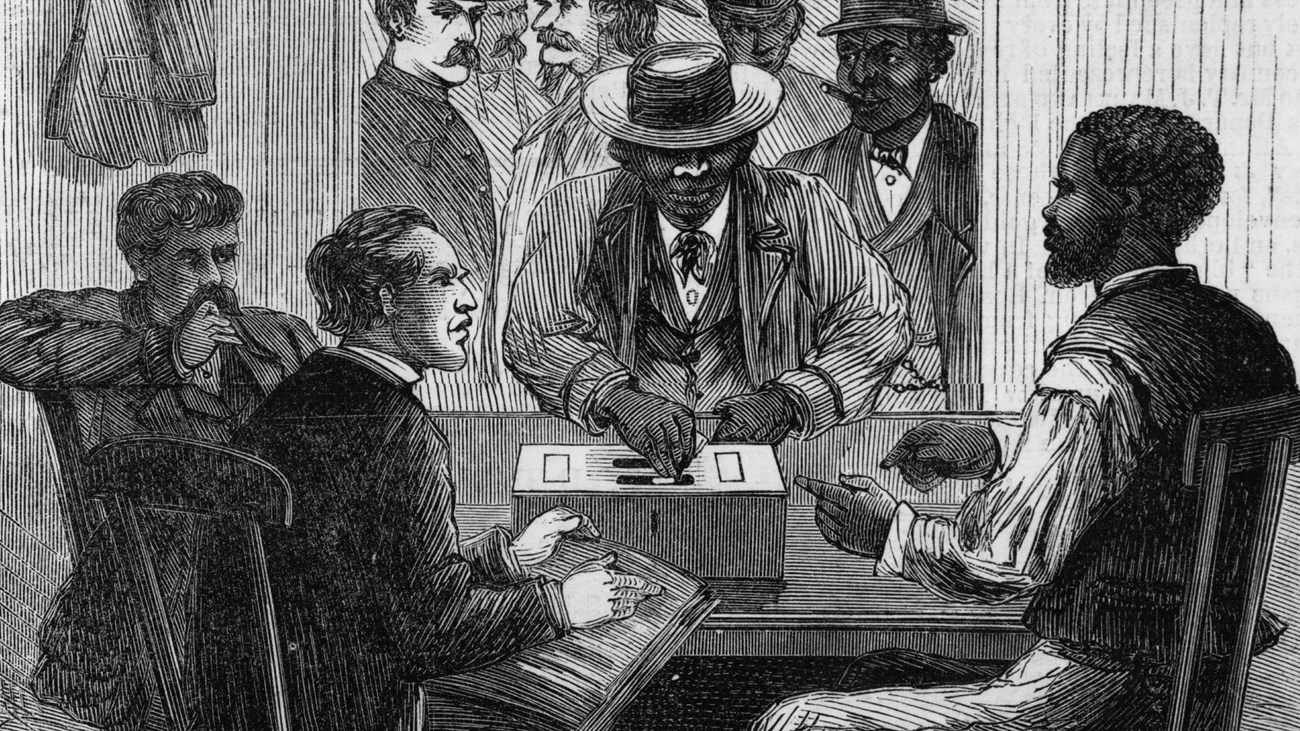|
The Reconstruction era (1861 to 1900), the historic period in which the United States grappled with the question of how to integrate millions of newly freed African Americans into social, political, and labor systems, was a time of significant transformation within the United States. Reconstruction began when the first United States soldiers arrived in slaveholding territories and enslaved people escaped from plantations and farms; some of them fled into free states, and others found safety with U.S. forces. During the period, Congress passed three constitutional amendments that permanently abolished slavery, defined birthright citizenship and guaranteed due process and equal protection under the law, and granted all males the ability to vote by prohibiting voter discrimination based on race, color, or previous condition of servitude (Thirteenth, Fourteenth, and Fifteenth amendments). Congress also passed a series of Reconstruction Acts that divided the former Confederacy into five military districts and laid out requirements for re-admittance to the Union (except Tennessee). The experience of Reconstruction, and the rebuilding of the Union following the Civil War, played out across America and resulted in changes that fundamentally altered the meaning of citizenship and the relationship between Federal and state governments. Central to this drama was the former Confederacy where social, economic, and political changes dramatically transformed the region and where major activities of and resistance to Reconstruction took place. African Americans - across America - faced steep obstacles as they attempted to claim their newly won rights. Ultimately, the unmet promises of Reconstruction led to the modern civil rights movement 100 years later. 
People
Learn about some of the people associated with the Reconstruction era 
Places
Discover some of the places associated with Reconstruction in the Lowcountry and beyond 
Stories
Learn more about the Reconstruction era by exploring some of these articles written by historians and park rangers. 
Reconstruction Era National Theme Study
In 2017, the NPS published a theme study on Reconstruction. This provides an overview of the era, as well as key locations. Featured Stories
The Port Royal Experiment
In the fall of 1861, the US military came ashore in Beaufort and found thousands of now formerly enslaved people in control of the region. 
The Year of Jubilee Has Come
Learn about the history of Camp Saxton and the 1st South Carolina Volunteers. 
The "Planter": A Strike for Freedom
Dive into the stories of each person who sought freedom aboard the "Planter." 
Poems by Ellen Murray
Ellen Murray's poems offer a glimpse in the world and perspective of one of Penn School’s founders. |
Last updated: November 18, 2025
